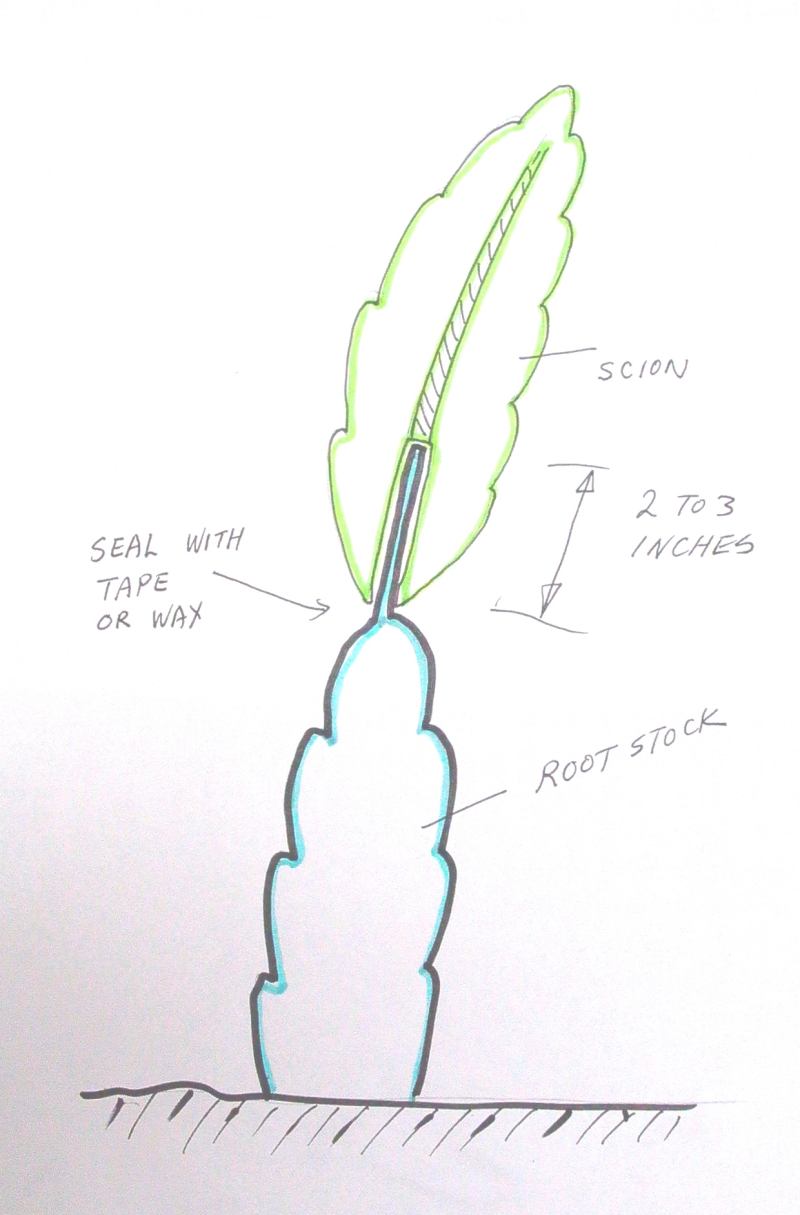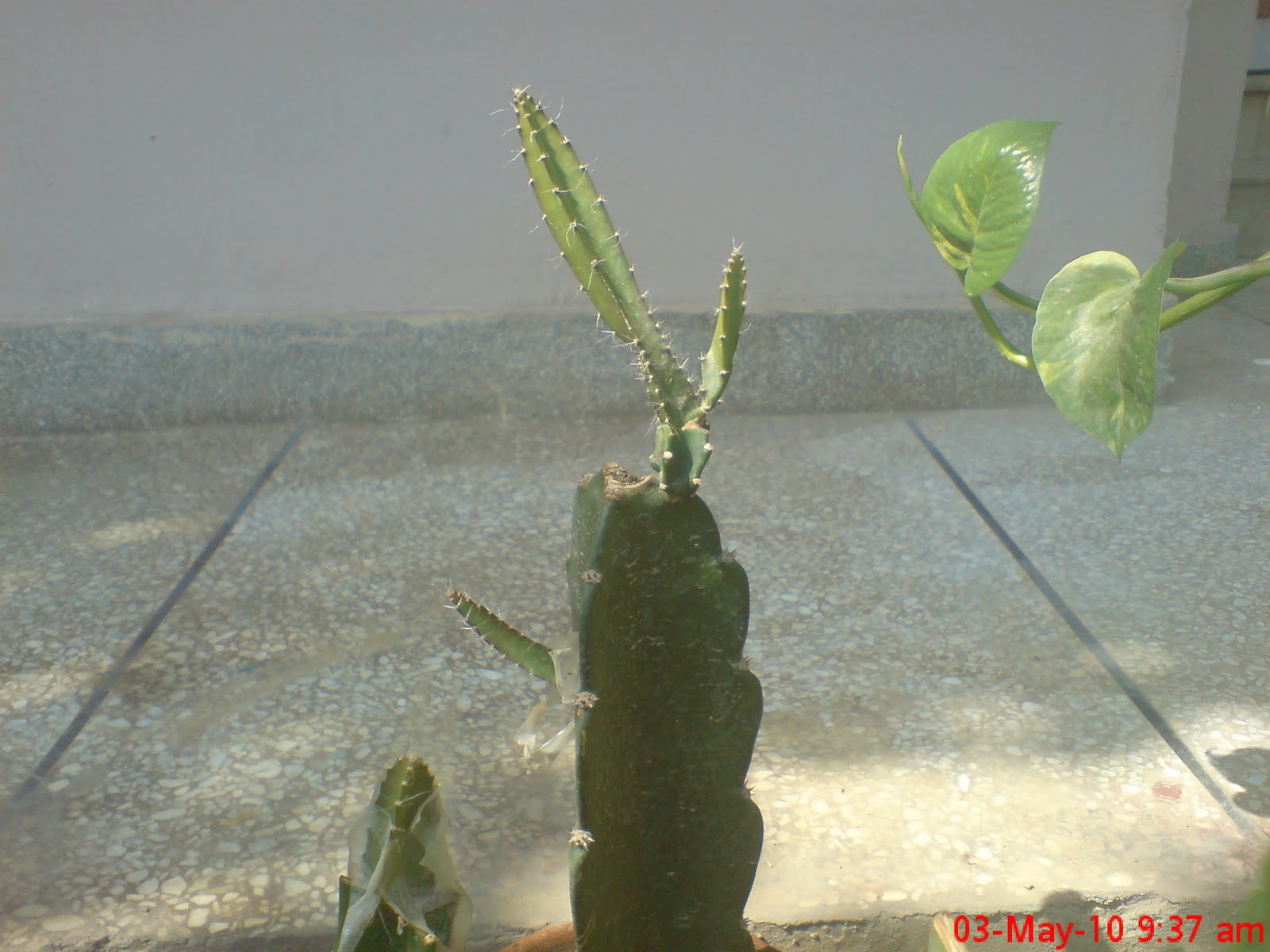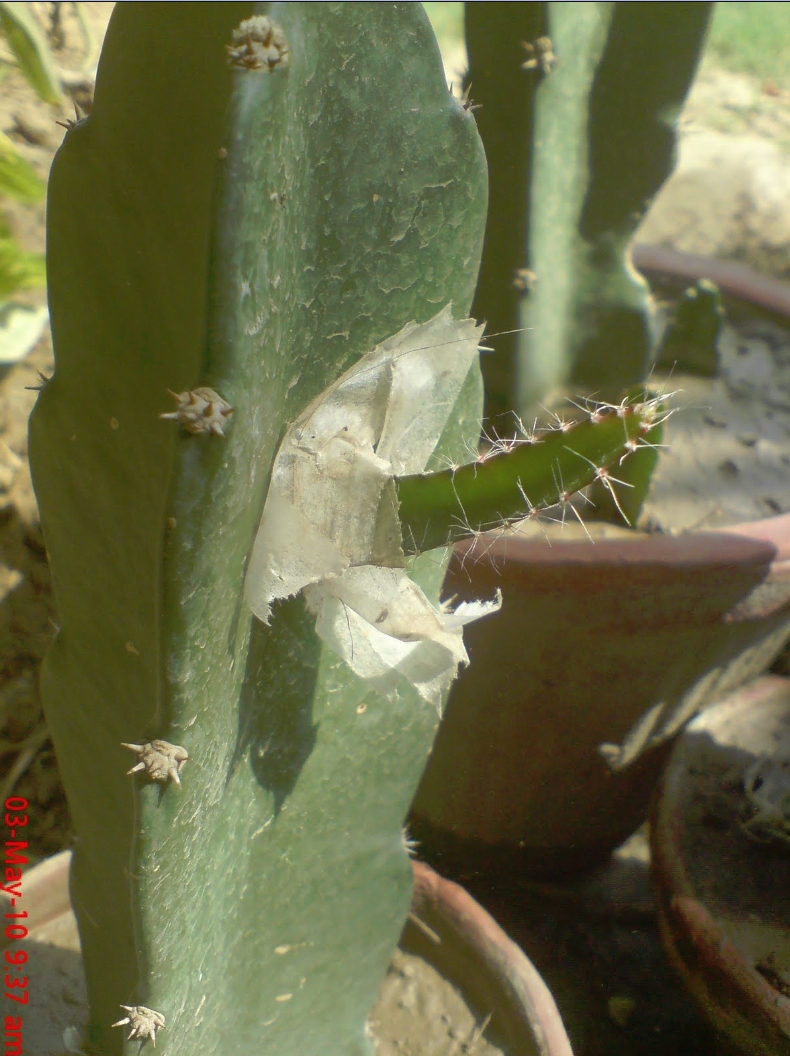The dragon cactus is considered a vine. This plant bends like a rubber
hose when it is longer than 36 inches. It is stiff enough to be a column
cactus when it is less than 20 inches. Color pincushion cactus are often
grafted to the top of hylocereus. These are sold as decorative house plants.
Grafting is used to increase the hight of a cactus. Flowering
Christmas or Easter castus are grafted on top of a column so the vines
hangs down like the branches of a willow tree. Grafting a seedling
on an established plant can give you a fruit quickly.
Paco Frausto was invited to give a talk about grafting dragon fruit
at September 2019 Dragon Fruit Festival. Paco has a FaceBook presence
about grafting dragon fruit. Paco also has YouTube stories with the
Paco F. Grafting a small cutting from store bought fruit
Richard Lee also from the Los Angeles area has several YouTube lessons on
grafting dragon fruit.
Cleft graft dragon fruit vine
Graft seedling demonstration
Grey Martin dragon fruit grafting experiments
Agri Buzz demonstration of grafting
Chinese grafting lesson

The wood core is removed from the scion by twisting and cutting.
This creates an empty cavity at the bottom 2 to 3 inch of the scion.
The rootstock is trimmed so that there is a 0.1 inch diameter wood
stem protruding from the top. Since the wood protrusion match the
cavity on the scion, the two pieces can be plugged together. The
junction is sealed with wax or tape.

These are graft experiment made by Saeed Waqas. He used native
Pakistani cactus for rootstock.

Waqas has email contact at saeedwaqas at gmail.com.
How to graft cactus Union County College, New Jersey
Return to Long Live Dragon Fruit/Viva Pitaya